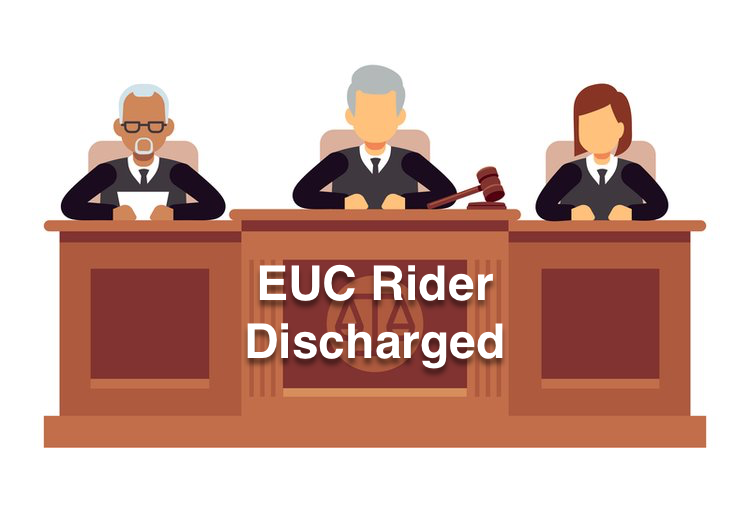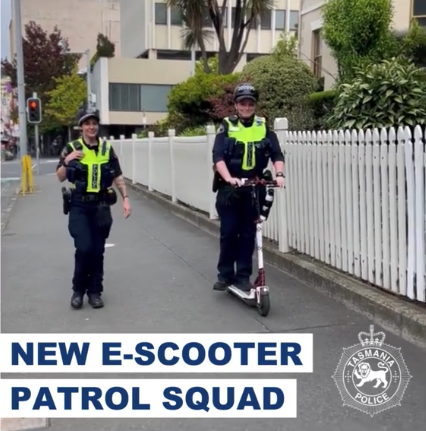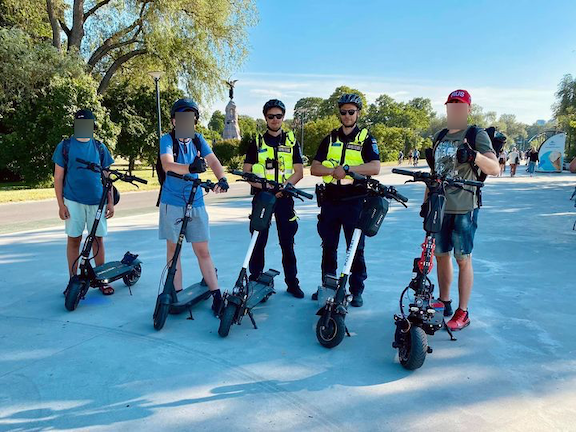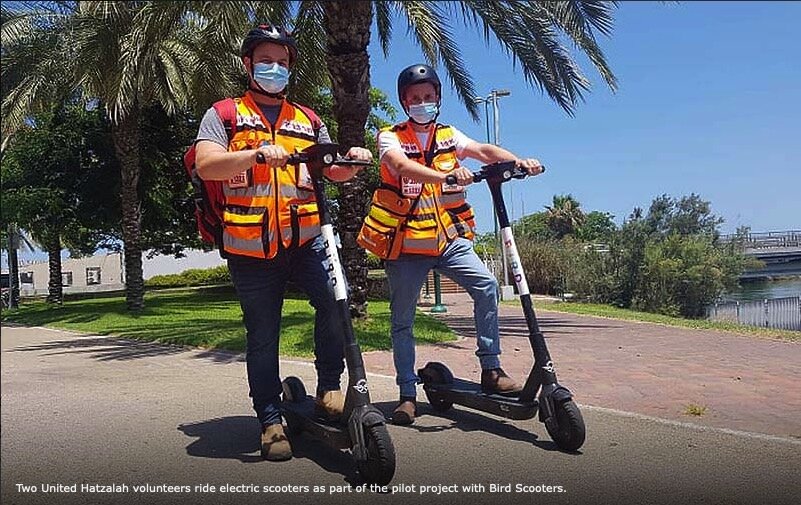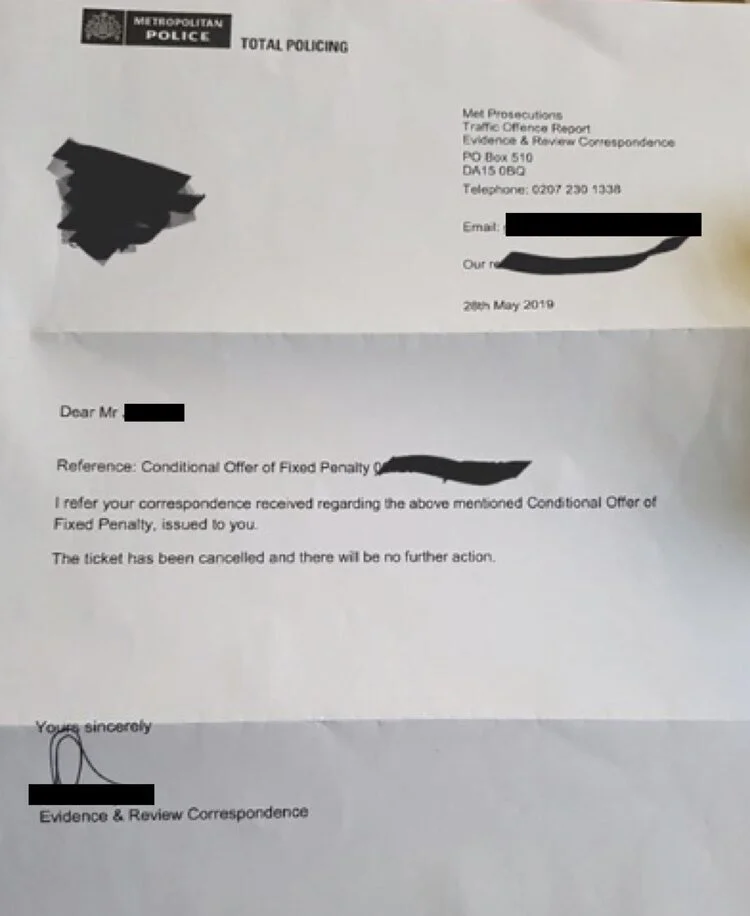Electric Scooters UK Law 2025: Private e-scooters, unicycles, and one wheels remain illegal on public roads — but legislation could finally change. Here’s the current status, enforcement trends, and what to expect next.
Veteran Sherman L Electric Unicycle: Expert Review Summary
The Veteran Sherman L has garnered attention from various reviewers, each offering unique insights into its performance and features. Here’s a comprehensive analysis, incorporating direct quotes from multiple reviewers under each subheading.
We know there are hours of high-quality, real-world video reviews online, but not everyone has time to watch them all. This summary distils key insights into strengths and weaknesses, saving you time and helping you decide whether to buy new or second-hand.
Based on the top YouTube reviews at the time of writing, this guide combines expert insights with my own analysis for a balanced overview. You’ll also find links to reviewer Bio’s and full reviews for deeper exploration.
Each section features direct quotes from reviewers, ensuring a comprehensive real world breakdown, helping you focus on what matters.
Read on to discover whether this wheel is the right choice for you!
Summary
The Sherman L builds on the legacy of its predecessors, focusing on long-range comfort and stability while incorporating advanced safety features.
Its 4,000Wh battery ensures extensive range, and its Hall sensor redundancy enhances reliability, even in challenging conditions.
Reviewer Insights:
Freshly Charged: “LeaperKim has released the latest edition of the Sherman: the Veteran Sherman L. We’ve reviewed a number of previous LeaperKim wheels, including the Veteran Lynx, Veteran Sherman, Veteran Sherman Max and Veteran Abrams, but the Sherman L is the longest range, biggest and most expensive LeaperKim wheel yet.”
ElectricUnicycles: “This ride is an experience; it brings out the best of what the Sherman series is known for.”
Wilson’s Hobbies: “For some riders, the range and build quality justify the investment.”
Hsiang: “The Sherman L builds on proven technologies but doesn’t redefine the game.”
eevee’s: “This wheel excels in stability and comfort for long rides.”
Technical Specifications
The Sherman L boasts impressive technical specifications:
Voltage: 151V
Motor Power: 3,200W nominal, 8,000W peak
Battery Capacity: 4,000Wh
Wheel Diameter: 18-20 inches
Weight: 102.5 lbs (46.5 kg)
Top Speed: ~60 mph (97 km/h)
Range: ~100 miles (160 km), depending on riding style
Suspension: Fastace, 90 mm travel with adjustable spring options
Reviewer Insights:
Freshly Charged: “The 3200W motor provides plenty of torque and accelerating power at any speed, up almost any incline.”
ElectricUnicycles: “The voltage makes a noticeable difference when climbing and accelerating—it’s a real powerhouse.”
Wilson’s Hobbies: “For some riders, the range and build quality justify the investment.”
Hsiang: “The Sherman L builds on proven technologies but doesn’t redefine the game.”
eevee’s: “This wheel excels in stability and comfort for long rides.”
Suspension
The Sherman L features a Fastace progressive hydraulic suspension system, offering 90 mm of travel. Riders can choose between springs with different stiffness levels (62 lbs, 66 lbs, or 70 lbs) to tailor the suspension to their weight and riding style.
Reviewer Insights:
Freshly Charged: “The FastAce suspension provides 90mm of travel, with 3 different spring options, either 62lbs, 66lbs or 70lbs.”
ElectricUnicycles: “The suspension offers comfort but could be softer for urban rides.”
Wilson’s Hobbies: “It’s functional, but for city riders, a softer spring might be ideal.”
Hsiang: “The progressive shock design leans more toward durability than urban comfort.”
eevee’s: “A linear spring from the Sherman S might enhance its street performance.”
Motor Performance and Torque
Equipped with a 3,200W motor (8,000W peak), the Sherman L delivers exceptional torque and responsiveness. Its smooth acceleration curve is particularly praised by reviewers, with high stability even at top speeds.
Reviewer Insights:
Freshly Charged: “The 3200W motor provides plenty of torque and accelerating power at any speed, up almost any incline.”
ElectricUnicycles: “It climbs steep hills effortlessly with no loss in power.”
Wilson’s Hobbies: “The motor offers ample power but drains the battery when pushed hard.”
Hsiang: “Smooth power delivery, but it feels like incremental progress.”
eevee’s: “A shocking amount of torque for such a big wheel—effortless at high speeds.”
Off-Road Performance
While the Sherman L isn’t designed for technical trail use, its robust construction and stable ride make it suitable for light off-road paths. The stock tyre offers decent grip for gravel and uneven terrain, though the wheel’s weight limits agility on tighter trails.
Reviewer Insights:
Freshly Charged: “This is primarily a street wheel, but it can handle trails when needed.”
ElectricUnicycles: “It shines on moderate trails but feels bulky on technical paths.”
Wilson’s Hobbies: “Not ideal for tight, technical single-track trails.”
Hsiang: “The weight limits its agility on rugged terrain.”
eevee’s: “A street wheel at heart, but capable of light trail use.”
Urban Usability
For city use, the Sherman L excels in stability and ease of handling, particularly at higher speeds. Its newly designed trolley handle, praised as the best in any Sherman model, adds convenience. However, the weight of 102.5 lbs can make it cumbersome for urban riders who need to frequently navigate stairs or crowded spaces.
Reviewer Insights:
Freshly Charged: “The best trolley handle in any Sherman makes urban use easier.”
ElectricUnicycles: “The stability makes it great for city commutes, though not for crowded spaces.”
Wilson’s Hobbies: “Navigating stairs with 102 lbs of wheel isn’t fun, but the wheel itself is stable and predictable.”
Hsiang: “The weight limits portability but enhances road stability and ride comfort.”
eevee’s: “Despite its size, beginners can acclimate quickly thanks to its smooth and forgiving ride.”
Range
The Sherman L’s massive 4,000Wh battery is a key selling point, enabling ranges of up to 100 miles per charge under optimal conditions. Testers found it reliable, even when pushing the wheel to higher speeds or navigating challenging terrain.
Rider weight, terrain, and speed heavily influence range, with lighter riders achieving greater distances. At a moderate pace of 35 km/h, the Sherman L reliably covered between 90 to 100 miles, making it one of the best options for long-distance enthusiasts.
Reviewer Insights:
Freshly Charged: “I managed 151 km (94 miles) on a single charge at moderate speeds—a serious achievement.”
ElectricUnicycles: “Range anxiety is nonexistent with this wheel, even for long-distance trips.”
Wilson’s Hobbies: “You’re getting 70–85 miles on most rides, but fast chargers are essential for reducing downtime.”
Hsiang: “Range is the main selling point, but it might not justify upgrading from the Lynx if you don’t ride far often.”
eevee’s: “I love not needing to charge during an entire trip—one charge is plenty for a full day of riding.”
Durability and Customisation
Durability is a hallmark of the Sherman series, and the Sherman L is no exception. Its magnesium shell balances strength and weight reduction, ensuring it can withstand rough handling and challenging terrains. However, stock customisation options are limited, with riders often seeking third-party upgrades for features like seats or grippier pedals.
The inclusion of Hall sensor redundancy is a major improvement in safety, allowing the wheel to continue operating even if a sensor fails—a feature praised by multiple reviewers.
Reviewer Insights:
Freshly Charged: “Hall sensor redundancy is a game-changing safety feature that reduces the likelihood of catastrophic cutouts.”
ElectricUnicycles: “This thing is built like a tank; it’s not going to break down easily, even under harsh conditions.”
Wilson’s Hobbies: “Expect high durability but limited stock customisation options, which can frustrate riders who want more.”
Hsiang: “More range but less innovation—it feels like an iterative step, not a revolutionary one.”
eevee’s: “Where’s the seat? It’s essential for long-range comfort, and I hope third-party manufacturers address this soon.”
Known Issues
The Sherman L has a few limitations that potential buyers should consider. While none of these are deal-breakers for most experienced riders, they are worth noting:
Weight: At 102.5 lbs, it’s one of the heaviest wheels on the market, making portability a challenge.
Stock Pedals: Riders found the stock pedals lacking grip, especially during aggressive riding or in wet conditions.
Suspension Stiffness: The Fastace suspension, while excellent for off-road impacts, can feel too rigid for urban riding.
No Stock Seat: Given its long-range focus, the absence of a seat is an oversight that affects comfort on extended rides.
Reviewer Insights:
Freshly Charged: “It’s almost perfect, but the small things—like the lack of a stock seat—feel like oversights.”
ElectricUnicycles: “Some pedals can be slippery, and the lack of a seat is inconvenient for riders who go long distances.”
Wilson’s Hobbies: “You might need to swap out the pedals immediately for something with more grip.”
Hsiang: “These minor flaws are noticeable but don’t overshadow the wheel’s overall reliability.”
eevee’s: “For a wheel this capable, it’s surprising that some basics like a seat aren’t included.”
Target Audience
The Sherman L is designed for experienced riders who prioritise stability, long-range performance, and safety. It’s less suitable for casual users or those looking for a lightweight, agile wheel for urban commuting.
Ideal Riders:
Long-distance commuters who need extended range without frequent charging.
Speed enthusiasts seeking high torque and stability for highway or open-road riding.
Riders prioritising durability and safety features, especially those riding in diverse terrains.
Less Ideal Riders:
Beginners who may find the size and weight intimidating.
Trail enthusiasts looking for agile, lightweight wheels for technical single-track paths.
Urban commuters who need to frequently carry or lift their wheel.
Reviewer Insights:
Freshly Charged: “For riders who want peace of mind during long trips, this wheel is hard to beat.”
ElectricUnicycles: “The weight might deter some buyers, but it’s a dream for those who prioritise stability.”
Wilson’s Hobbies: “Not for everyone, but the right rider will find this wheel transformative for their rides.”
Hsiang: “It feels like a wheel designed for veterans of the EUC community rather than new riders.”
eevee’s: “A fantastic touring wheel, but it’s not the playful wheel some riders might want.”
Veteran Sherman L Marks Out of 5
| Category | Score | Comment |
|---|---|---|
| Performance | 4.5/5 | Smooth torque and acceleration but heavy for nimble handling. |
| Durability | 5/5 | Excellent build quality and safety redundancy with Hall sensors. |
| Urban Usability | 4/5 | Stable and commuter-friendly but limited by weight and portability. |
| Off-Road Capability | 3.5/5 | Great for light trails but too heavy for technical terrain. |
| Value for Money | 3.5/5 | High price with missing basics like a stock seat or grippy pedals. |
Overall Rating: 4.1/5
Conclusion
The Veteran Sherman L is a standout wheel for long-distance enthusiasts and riders who demand durability and performance. Its combination of stability, safety features, and range makes it a compelling choice for experienced EUC users. However, its weight and high price may deter casual riders or those new to electric unicycles.
If you’re ready to invest in a premium EUC for long rides, the Sherman L delivers exceptional performance. But for riders with different priorities, exploring alternatives like the Lynx or Kingsong S22 might be worthwhile.
What do you think about the Sherman L? Share your thoughts or experiences in the comments below!
Veteran Sherman L Frequently Asked Questions
-
The Veteran Sherman L has a stated maximum range of 125 miles. However, the real-world range depends on factors like terrain, rider weight, speed, and riding style. Most riders report achieving over 100 miles on a full charge under typical conditions.
-
The Sherman L weighs 102.5 lbs (46.5 kg). Its weight enhances stability and durability but can make it less portable for frequent lifting or carrying.
-
Due to its size, weight, and power, the Sherman L is recommended for experienced riders. Beginners are advised to start with smaller, lighter, and less powerful wheels before transitioning to advanced models like the Sherman L.
-
The Sherman L features a hydraulic suspension system with a progressive spring. Riders can choose between three spring options—62 lbs, 66 lbs, and 70 lbs—to suit their preferences and riding conditions.
-
Some riders have noted that the stock tire can cause “train-tracking” at lower speeds. Additionally, the wheel’s heavy weight and bulk can make tight maneuvering challenging, especially in urban environments.
Sources
This expert summary is based on insights from some of the top YouTube channels in the electric unicycle community, each bringing a unique real world perspective. You’ll find their bios and links below if you want to dive deeper!
Freshly Charged, formerly known as the Jimmy Chang YouTube channel, is dedicated to testing and reviewing personal electric vehicles (PEVs) such as electric unicycles, e-scooters, e-bikes, and Onewheels. Founded by Jimmy Chang, the channel aims to provide informative content to help viewers make informed decisions about their next PEV purchase.
ElectricUnicycles is a YouTube channel dedicated to electric unicycle enthusiasts, offering a variety of content including ride videos, equipment reviews, and repair tutorials. The channel aims to provide valuable information and entertainment for both new and experienced riders, sharing the joy and intricacies of electric unicycling.
Wilson’s Hobbies is a YouTube channel that showcases a variety of content, including electric unicycle ride videos, video game highlights, and miscellaneous topics. The channel aims to provide engaging and informative content for hobby enthusiasts.
Hsiang is a YouTube channel that delves into the world of electric unicycles (EUCs), offering a mix of ride experiences, product reviews, and industry insights. The channel aims to provide valuable information and entertainment for both new and experienced EUC riders.
eevee’s is Canada’s premier personal electric vehicle (PEV) retailer, specializing in e-scooters, electric unicycles (EUCs), and electric skateboards. Their YouTube channel complements their retail operations by providing how-to guides, product reviews, and the latest news on PEVs, including Onewheels, EUCs, e-scooters, and e-skateboards.
Curious to see the Veteran Sherman L in action? CLICK HERE to explore all the in-depth video reviews!
Electric Scooter Laws in the UK - 2024 Update: What’s Taking So Long?
The UK remains stuck in a legal grey area when it comes to electric scooters. Despite discussions dating back to 2015, private electric scooters are still illegal on public roads, leaving riders frustrated and facing inconsistent enforcement. While rental scooters operate under trial schemes, progress toward a comprehensive electric scooter law has been slow. This 2024 update explores the current situation, what’s causing delays, and what the future might hold for electric scooter riders in the UK.
e-Scooter Law Update: A Step Forward Amidst Criticisms - July ‘23.
In a notable move “Zag Daily” reported that the Transport Research Laboratory (TRL) and Warwick Manufacturing Group (WMG) have secured a contract from the UK's Department for Transport (DFT) to shape the technical requirements for future electric scooter legislation.
While the move signals progress in modernising the UK's transport sector, it comes amid criticisms of regulatory delay and concerns about meeting climate change targets.
Context: UK's Slow Regulatory Progress and Climate Implications
The rise of e-scooters and other personal electric vehicles (PEVs) such as electric unicycles, electric skateboards and one wheels, presents not only regulatory challenges but also opportunities for reducing carbon emissions.
In 2015, Prime Minister Boris Johnson expressed his frustration with the UK's sluggish progress in legalising e scooter devices, stating, "Stop this ludicrous and nannying prohibition on the electric scooter-surfboard gizmos."
However, the slow regulatory response has implications beyond convenience and mobility. The delay in integrating electric scooters and other PEVs into the UK's transport infrastructure, might hinder the country's efforts to meet its climate change targets, given the potential of these vehicles to reduce carbon emissions.
The DFT Contract: A Late but Crucial Initiative
Despite the criticisms, the DFT contract is a crucial step towards electric scooters legal. TRL and WMG will work on establishing technical requirements for e-scooters by the end of 2023.
These standards are expected to be completed by mid-2024, communicated to manufacturers at the start of 2025, and implemented across the UK by the end of 2025.
Unraveling the Likely Approach of TRL and WMG
What will TRL and WMG be doing? Currently privately owned electric scooters are classed as “motor vehicles”. Although we don’t have specific details, it is likely the establishment of technical requirements for electric scooters willl be as follows:
Phase 1: Research and Analysis
To begin, TRL and WMG will likely embark on an extensive research and analysis phase, aiming to draw on global best practices for e-scooter regulation. This would involve studying successful models from other countries, understanding key safety and operational concerns, and factoring in unique local conditions and requirements.
Phase 2: Technical Standard Development
Following the research, the organisations are expected to formulate a comprehensive set of technical standards for e-scooters. These would cover crucial aspects like safety features, durability, maximum speeds, battery efficiency, and design specifications.
In developing these standards, they would need to strike a balance between ensuring public safety and enabling the benefits that e-scooters offer, such as mobility convenience and carbon footprint reduction.
Phase 3: Stakeholder Engagement
Once the technical standards are defined, TRL and WMG will likely engage with key stakeholders – manufacturers, local authorities, safety organizations, and e-scooter users. This would involve disseminating the new guidelines and gathering feedback to fine-tune the regulations.
Phase 4: Implementation and Monitoring
The final phase would involve implementing these regulations across the UK, possibly requiring legislative amendments. TRL and WMG would also likely play a role in monitoring the impact of these regulations, conducting ongoing reviews and recommending changes as necessary.
Impact on Existing e-Scooter and PEV Owners
Existing electric scooter, electric unicycle and other PEV owners will likely be directly affected by these new regulations. Subject to the scope of the new regulations, owners may need to adapt their vehicles to meet new standards concerning safety, performance, and durability. Restrictions may be applied to non-compliant models and requirements for vehicle registration and insurance may be introduced.
However, these changes also promise benefits, such as greater safety and legal clarity, which could boost the adoption of these eco-friendly vehicles.
The road traffic act 1988 remains in place as UK law stating that privately owned devices may only be ridden on private land, with the land owners permission.
The Bigger Picture: Climate Change Targets
Making privately owned electric scooters legal along with electric unicycles and other PEVs has far-reaching implications for the UK's climate change targets.
PEVs offer an environmentally friendly alternative to traditional modes of transportation, and their widespread use could significantly contribute to reducing greenhouse gas emissions.
However, the slow pace of regulation and subsequent delay in the widespread adoption of e-scooters and PEVs could put the UK's climate goals at risk.
By accelerating the regulatory process, the UK could potentially capitalise on the environmental benefits of PEVs sooner and make meaningful progress towards its climate commitments.
New York State implemented a temporary amnesty to encourage use of PEVs (electric scooters, bikes and other PEVs), during development of their regulations. Such an amnesty helped provide New York State with essential data regarding privately owned PEVs.
e Scooter Trials Status
UK rental e scooter trials will continue to run where relevant, until the current cut off date of 31st May 2024.
Conclusion: An Overdue Step Towards Sustainability
The collaboration between DFT, TRL and WMG signals progress, despite being overdue. The upcoming regulations will shape the future of electric scooters and PEVs in the UK, facilitating their safe, legal, and responsible use.
Although these standards are not expected to be implemented across the UK until by the end of 2025, we are not yet clear what the impacts are regarding the original 2024 legislative timescales.
More importantly, by promoting the adoption of these environmentally friendly vehicles, the UK has a chance to advance towards its climate change targets, even if the pace has been slower than hoped.
Let me know in the comments, your thoughts regarding current progress.
The Journey of a One-Legged Electric Unicycle (EUC) Rider
When faced with life-altering situations, the strength of the human spirit often shines through. Such is the case for Márcio, a resilient individual who didn't allow a tragic accident and subsequent amputation to hinder his zest for life and thirst for adventure.
A YouTube Video by Eletricz shows Marcio using an electric unicycle (EUC) as his means of transportation, Márcio has inspired many with his tale of perseverance, adaptability, and resilience.
The Joys and Challenges of the EUC
An EUC offers a thrilling ride and, despite requiring only one wheel, is an incredibly efficient mode of transportation.
However, for Márcio, the challenge was more nuanced. Mastering balance, control and understanding the limitations of his prosthesis posed significant hurdles. Nevertheless, he didn't let these deter him. His initial attempts were followed by rapid progress; within three days of practice, Márcio was confidently riding his EUC.
Mastering the Prosthetic Limb
Márcio's prosthetic leg became an integral part of his EUC journey. He discovered that the prosthetic limb was a useful tool for learning to balance, despite its inability to mimic the full range of motion of a biological leg.
The leg is engineered with an air mechanism that helps secure it in place, a feature that proved vital in Márcio's EUC ride. The resilience of his prosthetic leg, along with Márcio's indomitable spirit, proved to be the perfect combination for his unique venture.
A New Way to Experience the World
Despite the initial apprehensions and learning curve, Márcio quickly became adept at manoeuvring the EUC. His journey is not just about mastering a new skill, it’s about a shift in lifestyle, a new way to engage with the world around him.
He shared his love for the EUC, how it gives him a sense of freedom and excitement that he looks forward to every day.
Adaptation, Growth, and Discovery
Overcoming the fear of falling and gaining confidence on the EUC was a step-by-step process for Márcio. He gradually learned to control the weight distribution between his leg and the prosthetic limb.
Each day brought new understanding and further adaptability, culminating in the ability to ride his unicycle as far as 30km and to reach maximum speeds.
A Journey of Resilience
Márcio's story serves as a potent testament to human resilience and adaptability. His zest for life, combined with the innovative technology of the electric unicycle, presents an inspiring narrative.
His message to everyone? Challenge your limitations, dare to do something different, and give yourself the chance to enjoy life to the fullest. Whether it's riding an EUC, adopting a new hobby, or trying something out of your comfort zone, remember - life is beautiful, beautiful and beautiful.
CLICK HERE for the full YouTube Video
CLICK HERE for a post about an electric unicycle helping another amputee.
Electric Scooter Law Update: Transport Committee, May 2023
The Transport Select Committee held a session on 17th May 2023, where the Rt Hon Jesse Norman MP, Minister of State, Department for Transport, and Anthony Ferguson, Deputy Director for Traffic and Technology, Department for Transport provided updates on UK e scooter legislation.
The session focused on the future legislation, potential inclusions of other devices, reasons for legislative delays, safety considerations, and concerns about privately owned e-scooters and insurance.
Key Discussion Points
Future e Scooter Legislation
The minister expressed a need for more data before the Department for Transport (DFT) can propose any primary legislation. This data would inform a robust consultation process, where stakeholders could weigh in on several matters like insurance alternatives, safety measures, weight restrictions, and helmet use.
"We certainly don't have a consolidated basis of consultative evidence. And it wouldn't be normal practice for DFT to proceed without a pretty full consultation on this kind of issue, certainly not with primary legislation." - Rt Hon Jesse Norman MP
Inclusion of Other PEVs, Including E-bikes
In the discussion on other forms of transport that might be regulated, there was no specific mention of devices beyond electric scooters. However, the conversation around new legislation implied that it would apply to broader micro-mobility forms, potentially including e-bikes. The Deputy Director mentioned the "free floating model" prevalent in London, where e-bikes and e-scooters are used interchangeably.
Reasons for e Scooter Legislative Delays
Delays in legislation were attributed to the need for non-pandemic, large-scale usage data, and the importance of comprehensive consultation before legislation. This would include gathering more information on issues like helmet use, weight limitations, and insurance options. Jesse Norman MP emphasised the necessity for a "proper, settled public view" before they could legislate.
e Scooter Safety
Safety was a recurring theme throughout the session. Concerns were raised around the need for helmet use, the appropriate weight of electric scooters and e-bikes, and the potential safety risks to pedestrians and disabled individuals. The Minister acknowledged these issues and noted the necessity for further data and consultation. He suggested the need for additional safety equipment and even floated the idea of minimum age restrictions.
Privately Owned e Scooters
The issue of privately owned electric scooters was addressed in the context of regulation and enforcement. The minister and deputy director highlighted the complexity of enforcing rules around private e-scooters.
They acknowledged that law enforcement agencies may need to increase their activity in this area.
e Scooter Insurance
The session touched on the topic of insurance alternatives for e-scooter riders. The minister stated the need to consult stakeholders on this issue to get their perspectives, indicating that there are still discussions and considerations around this topic to be done before they can propose any legislative changes.
Concerns Surrounding e Scooters
The committee expressed frustrations about the slow pace of progress, with concerns that the UK was being left behind in e-scooter legislation.
Issues raised included the potential misuse of e-scooters in criminal activities and the impact on disabled individuals due to cluttered pavements and cycle lanes. The Minister noted these concerns and proposed solutions such as better enforcement, utilisation of digital tools for tracking, and local regulation of parking.
The session concluded with the emphasis on monitoring the current trials closely to learn from the ongoing qualitative data and addressing the challenges faced in these trial areas.
The Minister stated that they stand ready to have a conversation with the Home Office regarding further enforcement measures.
The committee looks forward to an update on the results from these trials, which will further guide the forthcoming legislation for e-scooters and possibly other micro-mobility devices.
"That's I would say as part of the qualitative learning that we're getting from the trials. So we talk regularly to the operators and the local authority areas taking part to understand what are the challenges they're facing." - Anthony Ferguson, Deputy Director for Traffic and Technology, Department for Transport
Summary
The Transport Select Committee session reiterated the complexity of implementing robust and comprehensive legislation for e scooters, potentially e-bikes and other micro-mobility devices.
While acknowledging concerns and challenges, it underscored the necessity for further data collection, consultation, and trials before any definitive steps can be taken in forming and enforcing a new set of laws. The Department for Transport aims to strike a balance between promoting innovative and sustainable transport methods and ensuring safety and order in public spaces.
The Minister and Deputy Director's responses throughout the session made it clear that the Department for Transport is considering multiple aspects of the issue — from the practical considerations of enforcement to the broader implications for public safety and the innovative transport industry.
The forthcoming legislation, guided by these discussions and the results of ongoing trials, will be a significant determinant in shaping the UK's micro-mobility landscape.
CLICK HERE for original video recording
Update
6th July 2023
Transport Research Laboratory (TRL) and Warwick Manufacturing Group (WMG) have secured a contract from the UK's Department for Transport (DFT), to shape the technical requirements for future electric scooter legislation.
CLICK HERE for more information.
Let me know in the comments below, if you found this update of interest.
Electric Unicycles Legal in the UK?: What You Need to Know
In recent years, electric unicycles have taken the UK by storm. These one-wheeled, self-balancing marvels are quickly becoming a popular mode of transportation, especially for urban dwellers. However, as the popularity of these devices soars, so too do questions surrounding the legalities of riding and owning them.
Introduction to Electric Unicycles
Electric unicycles are battery-powered, single-wheeled devices that riders stand on and control using body movements. They can reach impressive speeds and offer a fun, eco-friendly way to travel short distances. Despite their rising popularity, they still inhabit a grey area in terms of UK transportation laws. Understanding the legal landscape is essential.
Current Electric Unicycle UK Law
Privately owned electric unicycles (including Electric Scooters and Electric Skateboards) in the UK is governed by the Road Traffic Act 1988, section 34 and the Highway Act 1835, section 72.
Electric unicycles are legal to ride in the UK on private land with the land owners permission only. Privately owned electric unicycles are not explicitly permitted on public roads, cycle lanes or pavements.
Electric unicycles also fall outside the scope of the Electrically Assisted Pedal Cycle (EAPC) regulations. This is because they lack pedals and don't meet the necessary specifications.
In essence, electric unicycles occupy a legal grey area in the UK, with riders potentially facing fines, confiscation or penalties for using them in public spaces.
I’ll come back to this “Grey Area” further in this post.
Electric Unicycle Law Classification: EAPC Rules
To better understand the legal status of electric unicycles, it's helpful to examine EAPC regulations. These rules apply to electric bikes, which have a certain degree of legal recognition in the UK. EAPCs must meet the following criteria:
Be fitted with pedals capable of propelling the bike
Although it can be argued that pedals on electric unicycles do propel the device through leaning forwards, UK law enforcement also argue it’s the motor propelling the device, not the pedals.
Have a maximum power output of 250 watts
Unlike electric scooters, electric unicycles require additional power to keep the device upright (self balancing). This additional power requires more batteries making the device heavier. Coupled with the requirements to take a rider safely up inclines and provide reasonable range, electric unicycles are typically between 700 watts and 3500 watts.
Not exceed a speed of 15.5 mph (25 km/h) on electric power alone
It is possible to restrict an electric unicycle to 15.5mph via an accompanying app. However it could be argued that riding any device at this speed amongst 30mph plus traffic could pose a danger in itself. Having headroom for additional speed could help get a rider out of potentially dangerous situations.
Unless EPAC rules are changed, electric unicycles don't currently qualify as EAPCs and thus do not enjoy the same legal status.
Electric Unicycle UK Law Grey Area
As time draws on, more and more people are starting to accept Private Light Electric Vehicles (PLEVs) as a practical alternative mode of transport. Indeed such devices have been legal in many other countries for some time now.
Although it is currently illegal to ride privately owned electric scooters and electric unicycles on public roads, pavements and cycle paths, some electric unicycle and electric scooter riders appear to be having more positive interactions with their local Police force.
I wrote a post about how I was able to register my own electric unicycles with the DVLA, resulting in a valid V55 registration document and “Q” registration numbers.
Age and License Requirements for Riders
While EAPC rules don't apply to electric unicycles, UK government are considering including a minimum age and licence requirements for riders of electric scooters. Whether or not initial PLEV legislation will also include electric unicycles, remains to be seen.
Insurance and Vehicle Tax Obligations
Electric unicycles are currently legal in the UK, but only if ridden on private land with the landowners permission. As a result more insurance companies are starting to offer policies that cover PLEVs, when ridden legally. Such insurance might cover personal injury, theft, third-party liability and possibly damage to your electric unicycle.
It is also possible to include electric unicycles on house contents insurance policies as “Special Equipment”. Although electric unicycles aren't classified as motor vehicles, it's still wise to consider insurance. Comparing offers from different insurers will help you find the right policy for your needs and budget.
In terms of tax, given that electric unicycles can only be legally ridden on private land with the landowners permission, vehicle tax does not currently apply.
Safety Equipment
Safety should always be a top priority for electric unicycle riders. While the UK does not legally mandate any safety equipment for electric unicycle users, it's highly recommended to wear safety equipment for your own protection.
You never know what is going to unexpectedly leap out in front of you or if your electric unicycle experiences an electric issue, causing you to rapidly dismount.
The following safety equipment is essential for a secure ride:
Helmet
Benefits of wearing a helmet can be obvious, however a full face helmet or helmet with a safety tested chin guard can be essential when riding electric unicycles.
Wrist Guards
In the event of a fall one of the first things you are likely to do is stretch out your arms. Wrist guards will help protect wrists particularly from higher speed falls.
Elbow and Knee Pads
Guarding these joints can prevent scrapes, bruises, and more severe injuries that could result in potentially long and expensive recovery times. Padded motorcycle jackets are also popular.
High-Visibility Clothing
Making yourself visible to others is crucial, especially when riding in low-light conditions.
Reducing Risk of Negative Interactions
Experiences shared on social media is showing that wearing of safety equipment and good rider etiquette not only gets mainly positive responses from the public, but can also help with interactions with the Police.
Here are a few tips which may be particularly useful for newer riders:
Yield to Pedestrians
Always give right of way to those on foot and be prepared to slow down or stop if necessary.
Respect Other Users
Share the space with cyclists and motorists (if on a rental electric scooter), maintaining a safe distance and communicating your intentions clearly.
Stay in Control
Ride at a speed that allows you to safely react to any unexpected obstacles or changes in your path.
Follow Local Regulations
Be aware of any local bylaws or restrictions regarding electric unicycles and adhere to them.
Practicing a good riding etiquette, can help keep you safer, promote a positive image for electric unicycles and contribute to their acceptance in the wider community.
Future Law Changes for Electric Unicycles
New legislation for electric scooters is currently under review / drafting by the UK government. At time of writing, it is not yet clear whether or not other PLEVs such as electric unicycles will be included in the first round of legislation.
Current timescales as indicated by the Secretary of State for Transport is 31st May 2024, when the current electric scooter trials come to a close.
Fingers crossed for 2024!
Frequently Asked Questions
-
Although insurance isn't legally required for electric unicycles in the UK, obtaining coverage for personal injury, theft, and third-party liability is highly recommended.
-
Electric unicycles are currently legal to ride on private land, with the landowners permission. The Secretary of Department for Transport advised that electric scooter legislation should be in place by 31st May 2024. It is not yet clear if electric unicycles will be included.
-
Helmets and safety gear are not legally mandated for electric unicycle riders in the UK, but wearing a helmet, wrist guards, elbow and knee pads, and high-visibility clothing is strongly advised for your safety and the safety of others.
-
It is currently illegal to ride your electric unicycle on roads, cycle paths or pavements. If caught, you could face a fine, penalty points or even confiscation of your device.
Expert Insights: Leaperkim Veteran Patton
Choosing the ideal electric unicycle no longer has to be a lengthy process. This post offers you a concise summary of the most informative and relevant review videos, featuring expert EUC riders and their ‘real world’ experiences with the leaperkim Veteran Patton.
By leveraging the collective wisdom of expert EUC riders, this post should help empower you to make a confident choice when selecting your next electric unicycle!
Ride Safe!



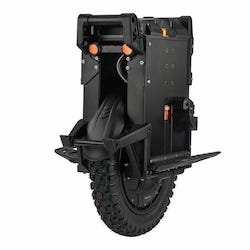

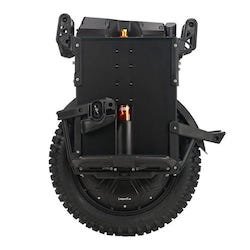

Leaperkim Veteran Patton Specifications
Volts: 126v
Motor: 3000w
Battery: 2200wh (Samsung 50E)
Wheel Size: 16 inch
Range: 88km (55 miles)
Top Speed: 70kmh (43mph)
Free Spin: 107kmh (66mph) - HS Mode
Suspension: Fastace, dual piston
Weight: 43kg (95lbs)
Dimensions: 53cm x 20cm x 63cm
The Veteran Patton is an electric unicycle that has garnered significant attention in the EUC community. This summary consolidates various reviews, highlighting key takeaways on its performance, durability, range, off-roading capabilities, and portability.
Performance
Impressive top speed of 70 km/h (43 mph), in “high speed mode”.
Quick acceleration
Smooth and stable ride
Excellent torque and hill-climbing capabilities
Responsive braking system
Durability
Strong build quality with aluminum alloy frame
Large 3-inch tire for better stability and traction
Can handle bumps, potholes, and other road imperfections
Weather-resistant design with IP55 water and dust resistance rating
Durable stock pedals with good grip
Range
2,200Wh battery with a range of up to 300 km (55 miles) on a single charge
Real-world range will vary depending on factors such as rider weight, terrain, and speed
Charging time of around 5-6 hours using a fast charger
Off-Roading Capabilities
Excellent performance on trails, dirt, and grass
Powerful motor enables tackling obstacles like stumps and rocks with ease
Wide tire provides good traction and stability on uneven surfaces
Portability
Weighs around 43kg (97lbs), making it heavier than some competitors
Bulky design may not be suitable for commuters who need to carry the unicycle frequently
Limited portability due to weight and size, but its performance and range may outweigh this drawback for some users
Comfort and Ergonomics
Comfortable ride with minimal vibrations
Adjustable pedal height to suit various rider preferences
Padding included with the purchase, providing a comfortable and secure fit
Some riders may prefer additional aftermarket padding for a more locked-in feel
Additional Features
Built-in kickstand for easy parking
Trolley handle for easy maneuverability when not riding
LED lights for improved visibility and safety
Bluetooth speaker for music playback
Minor Issues
Slight squeaking noise from bearing cover, which the manufacturer claims is normal and does not affect performance
Tire change may be time-consuming due to a large number of bolts and screws
Detailed Specification
Overall, the Veteran Patton EUC seems to offer an impressive combination of performance, durability, and range, making it an attractive option for both on-road and off-road use.
While its portability may be limited due to its weight and size, if you’re seeking a powerful and feature-rich unicycle, you may find the Patton a worthwhile investment.
Be sure to check out the following videos, for more information on the Veteran Patton electric unicycle: e-Rides, EUC Upgrades, Hsiang, Electric Dreams, eevees.
Share your thoughts or issues with the Veteran Patton, in the comments below:
Parisians Take Control: Rental E-Scooters Out, Private Ones In
Parisians have voted to ban rental electric scooters in their city, with almost 90% of votes in favor of the ban. This decision comes as a victory for road safety campaigners but a blow to scooter operators.
Privately owned electric scooters were excluded from the vote.
Despite the benefits of privately owned electric scooters, the decision to ban rental scooters in Paris comes after a rising number of accidents involving e-scooters. Critics argued that rental scooters caused more harm than good, with riders often not wearing helmets and children as young as 12 able to hire them.
Paris Mayor Anne Hidalgo called the referendum, allowing voters to decide on the fate of rental e-scooters in the city. The three main operators – Lime, Dott, and Tier – attempted to sway the vote by offering free rides on voting day and urging people to vote in their favor through social media.
While Parisians have voted to ban rental electric scooters, privately owned electric scooters remain unaffected. These privately owned scooters provide numerous benefits, such as increased safety, accessibility, sustainability, and cost-effectiveness.
Benefits of Privately Owned Electric Scooters
Privately owned electric scooters offer several advantages over rental electric scooters:
Safety: Owners of private scooters are more likely to use their scooters responsibly, reducing reckless driving and weaving through traffic. They may also be more inclined to wear helmets, increasing safety.
Accessibility: Private scooters are always accessible to their owners, eliminating the need to search for rental scooters or rely on their availability.
Sustainability: Privately owned scooters contribute to reducing the number of abandoned or improperly parked rental scooters that clutter pavements and public spaces.
Cost-effectiveness: Owning an electric scooter can be more economical in the long run, as there are no recurring rental fees.
CLICK HERE for Original BBC Article
Revolutionary Move: E-Scooters Now Legal in Victoria
Exciting news for e-scooter enthusiasts in Victoria! The e-scooter shared-scheme trial has been extended for another 6 months, and from April 5th, privately owned e-scooters can be used under strict trial rules across Victoria.
The trial of hire e-scooters in Ballarat and Melbourne was conducted to understand the safety implications of the transport mode, and now they will be monitoring how both hire and private e-scooters are being used.
The rules for privately owned e-scooters are simple: you must ride on shared-use paths and roads up to and including 60km/h, be over 16 years old, wear a helmet, not ride while under the influence of drugs or alcohol, ride up to a maximum speed of 20km/h, and not use your mobile phone or carry a passenger. Furthermore, you cannot ride on footpaths or use high-speed e-scooters that are capable of more than 25km/h.
To keep everyone safe, e-scooter riders must not carry passengers or animals, have proper control at all times, use a warning to avert danger, not ride two abreast, give way to pedestrians, and not lead an animal.
The trial found that e-scooters are a popular way to get around and there is a high demand from Victorians to be able to use them. Although the trial provided a significant amount of information, they need to ensure that e-scooters can be safely incorporated into the transport network on a long-term basis. Extending the trial with privately owned electric scooters will provide additional data to evaluate and inform future regulations.
In Victoria, there are about 100,000 e-scooters that are privately owned, and over the next six months, they will monitor how hire and private e-scooters are being used to ensure that the rules and regulations that are in place are fit-for-purpose and can effectively handle any safety concerns that may arise.
Their number one priority is the safety of everyone who uses roads in Victoria. So, let's ride safely and responsibly!
e-scooters in Victoria - Summary of trial findings March 2023
Tasmania's Cops Go Electric with New eScooters
Announced on social media today, Tasmania's law enforcement has taken a significant step towards sustainability by adopting electric scooters for patrolling and everyday use. The decision was made in response to the increasing popularity of eScooters and the need to transition towards greener transportation options.
Increased Efficiency: eScooters offer a more maneuverable and cost-effective mode of transportation, enabling officers to patrol areas that were previously inaccessible with traditional vehicles. Additionally, eScooters have a smaller environmental footprint, reducing the overall carbon emissions produced by the force.
Improved Community Relations: By embracing eScooters, the Tasmanian police force is demonstrating their commitment to environmental responsibility and setting a positive example for the community. This decision is expected to foster stronger relationships between the police and the public.
Safety Measures: To ensure the safety of both officers and civilians, the Tasmanian police will receive specialized training in eScooter handling and maintenance. Additionally, eScooters will be equipped with sirens, lights, and safety features to meet law enforcement standards.
The Tasmanian police's adoption of eScooters showcases their dedication to environmental sustainability and highlights the potential for greener transportation alternatives in law enforcement. This innovative approach is expected to bring numerous benefits, including improved efficiency, community relations, and economic opportunities.
When Will Electric Scooters be Legal in the UK? - March ‘23 Update
Personal Light Electric Vehicles (PLEVs) including Electric Scooters, Electric Unicycles and Electric Skateboards are powered by lithium ion batteries and have become a common sight in many UK cities, offering a convenient and environmentally friendly way to travel short distances for both able bodied people and people with disabilities.
However, in the United Kingdom, their legal status remains a contentious issue. Despite their popularity, privately owned electric scooters (PLEVs) remain technically illegal for use on public roads, pavements, and cycle lanes.
This post, will cover the reasons behind this and provide an update surrounding the legalisation of privately owned escooters (PLEVs) to make them legal in the UK.
Current Electric Scooter Legislation
Separate from e-bikes, the legal status of privately owned electric scooters (including Electric Unicycles and Electric Skateboards) in the UK is governed by the Road Traffic Act 1988, section 34 and the Highway Act 1835, section 72. Rental scooters have been made legal for the purpose of the UK e-scooter trials.
Under these acts, e scooters (PLEVs) are classified as "powered transporters," which puts them in the same category as motor vehicles. As a result, e-scooters (PLEVs) are subject to the same regulations as cars and motorcycles, including requirements for tax, insurance, and registration.
However, e scooters cannot meet these requirements due to their design and lack of features like indicators, number plates, and rear view mirrors.
Consequently, they are not considered roadworthy and are therefore illegal to use on public roads, pavements, and cycle lanes.
Anyone caught riding a privately owned electric scooter (PLEV) on public roads can face fines, penalty points on their driving license, and even the confiscation of their device.
It is legal to ride electric scooters (PLEVs) on private land, with the landowners permission.
Safety Concerns
One of the primary reasons behind the UK's strict stance on electric scooters is safety. There have been several high-profile accidents involving e-scooters, some of which have resulted in fatalities.
However electric scooter (PLEV) incidents are significantly lower when compared to other forms of transport. A prior blog post “E-Scooters - Safer Than You Think!” demonstrated at time of writing, that PLEVs were no more dangerous than cycling.
Concerns have been raised over the scooters' maximum speed and their lack of safety features, such as lights and indicators, similar to that of bicycles.
Critics argue that without proper regulation and infrastructure, e scooters (PLEVs) pose a danger to pedestrians and other road users.
They contend that legalizing e-scooters (PLEVs) without addressing these issues would only exacerbate the problem and lead to more accidents.
The Ongoing Debate
The UK government is not oblivious to the potential benefits of electric scooters. In response to the growing demand for alternative, sustainable transportation methods, the Department for Transport launched a series of e scooter trials in 2020.
These electric scooter trials allowed rental companies to operate in selected cities under strict guidelines, with the aim of gathering data on e-scooter usage, safety, and their impact on public spaces. The West Midlands were one of the early adopters.
The trials were extended in some areas of the UK with all trials coming to an end on 31st May 2023.
Advocates argue that e-scooters (PLEVs) offer a greener, more efficient way to travel short distances, reducing congestion and air pollution in urban areas. Electric scooters (PLEVs) also help individuals with certain disabilities or injuries to regain their mobility.
They also point out that proper regulation, infrastructure, and public education can address safety concerns and help integrate e-scooters into the existing transportation ecosystem.
On the other hand, opponents continue to emphasize safety concerns and argue that the focus should be on improving public transport and cycling infrastructure instead.
They raise concerns about trial e scooters cluttering pavements when parked irresponsibly, creating hazards for pedestrians, particularly those with disabilities.
Privately e scooters which were excluded from the trials, do not clutter pavements, as owners will want to keep their expensive devices with them.
Current Legislation Affecting People with Disabilities
There has been a limited amount of success regarding electric scooters / PLEVs helping people with disabilities.
The DVLA has approved some V55 registration applications to have privately owned PLEVs (eScooters and electric unicycles) registered as “invalid carriages”, where no vehicle tax, MOT or insurance is required (though recommended).
However applications can be “hit or miss”, due to the current legal status of privately owned PLEVs / DVLA assessor.
Successful registration does not currently make the device itself legal in the UK.
Legalisation of Other PLEVs
What about other PLEVs such as electric unicycles, one wheels, electric skateboards etc.?
To date there has only been mention of electric scooters, when it comes to new UK laws.
The UK Government are aware of the existence of such devices, however it is currently unclear whether or not they will be included in the initial round of legislation.
To reduce future legislative workload, it would make sense for the government to ensure new legislation covers all current / future PLEV devices.
We will just have to wait and see.
The Path to Legalisation
New laws for privately owned electric scooters (PLEVs) in the UK will require updating existing legislation, developing new regulations specific to e-scooters (other PLEVs?), and possibly investing in infrastructure.
Public education campaigns may also be required to ensure their safe integration into the transportation system.
While the electric scooter trials have provided valuable insights into their potential benefits and challenges, it currently remains unclear exactly when the UK Government will move towards legalisation.
However we may now have an indication.
Potential Legislative Timescale
7th December 2022
The new Secretary of State for Transport advised that UK legislation of electric scooters has been pushed back to end of 2023 / early 2024.
15th December 2022
UK Government published a “National Evaluation of E-Scooter Trials Report” which indicated that trial data is continuing to be assessed, ahead of the new e scooter trials deadline of 31st May 2024.
We were hopeful of legislation being complete during 2024. However there have been some further updates since time of writing this original post:
28th March 2023
A PACTS (Parliamentary Advisory Council for Transport Safety) conference, communicated that their current ambition is to submit legislative proposals to Parliament in the first quarter of 2024.
17th May 2023
An update meeting by the Transport Select Committee, covered reasons for legislative delays, inclusion of other PEVs and privately owned devices.
CLICK HERE for more information.
Until then, e-scooter (PLEV) riders must continue to navigate the complexities of the law and be aware of the potential consequences of riding on public UK roads and pavements.
How to Make an Electric Unicycle Safety Tether.
Imagine you are riding your electric unicycle without a care in the world and you suddenly find yourself sliding on the ground, watching your 65lb (30kg) single wheeled device barrelling ahead of you at some 30 miles an hour, towards other vehicles or worse still, innocent pedestrians. The legal consequences could be substantial!
What is an electric unicycle safety tether?
An electric unicycle (EUC) safety tether is a stretchable tether designed to help arrest a rolling / barrelling EUC, in the event of an accident or unexpected dismount. The safety tether connects the rider to their device, with automatic breaking points and a manual emergency release.
In the event of an accident or technical issue, a properly constructed safety tether, can quickly arrest your device, reducing risk of damage to property or serious injury to people. A safety tether will also help minimise damage to your device!
Will my insurance cover any accidents?
Due to self balancing unicycles being a relatively recent form of transportation and given that several countries are still finalising legislation around PLEVs, there are currently limited insurance options available.
PLEV insurance policies that do exist for electric unicycles, will only provide cover where it can be proved that the device was ridden legally within local laws. Such policies may or may not include personal liability cover.
Risks of riding an EUC without a safety tether
In the event that your self balancing electric unicycle causes damage to property or people, you as the rider could be liable for any property repairs, medical treatments and / or legal bills.
How does a safety tether work?
In the event you come off your device, a stretchable safety tether will apply more arresting force to the EUC as the tether stretches, initially causing the device to fall on its side ceasing a barrelling / rolling motion, before bringing the electric unicycle to a stop.
Can I use a safety tether on other personal electric vehicles?
Safety tethers can be effective on other forms of personal electric transport such as electric scooters, electric skateboards and one wheeled devices. Care should be taken to ensure the tether is of adequate length, to ensure it does not interfere with either the device or riders legs while riding.
Will a safety tether cause harm to the rider?
A properly constructed stretchable safety tether is unlikely to cause harm to the rider. Any harm caused, will likely be minimal and would surely be preferred to being responsible for damage to property or people.
To further reduce the risk of harm, it is recommended to have multiple breaking points designed into your safety tether.
Automatic Release - If the rider becomes unconscious.
Manual Release - To prevent the rider from being dragged.
Depending on how you design / build your own safety tether, your safety gear should help protect against risk of recoil.
How is a safety tether attached?
It is good practice to connect a safety tether is around the riders hips (I connect my tether to a strong belt), with the other end usually through the handle of the electric unicycle. Do not attach the tether around your waist, arms or legs or any potential weak points on your device.
How long should the safety tether be?
Tether length can vary according to rider height, wheel height, wheel weight and riding speed. The longer a safety tether is, the more it will stretch resulting in lower pulling forces on the rider.
A stretchable tether should be long enough (fully retracted) to not interfere with your legs or the device itself, while riding.
A good starting point is to stand on your device while supporting yourself and measure from your hip to where the handle of your device meets your leg / calf.
Can I buy an EUC safety tether?
Currently such tethers are not available on the market. However you can make your own safety tether from either a coiled surfboard leash or coiled kayak leash, with minimal effort and cost.
Can I use a non stretch safety tether?
A non stretch EUC safety tether could cause excessive force on your body, likely causing injury and the tether itself to prematurely break or release.
Example EUC safety tether
The below is my electric unicycle tether which took 15 minutes to make. I have been riding with this tether attached to my 30kg Gotway Nikola Plus the past few years.
It measures 60cm / 23.5” (un-stretched) so does not get in the way while riding and stretches up to 183cm / 72” (6’).
The tether has two key release mechanisms:
Manual release - In case the wheel falls down a steep slope, into water or gets caught under a moving vehicle.
Auto Release - Should I lose consciousness, comprises of two break points (2.5mm cable tie and velcro strap) are designed to give way, prior to pulling my body weight.
As a conservative rider (typically 20-25mph) this tether has proved to be very effective!
How do I make my own safety tether?
Your safety tether can be designed / built in many different ways according to your own height / weight, electric unicycle height / weight and riding speed. It is important to ensure that your design / build, works for you.
Purchase either a coiled surfboard leash or coiled kayak leash (the velcro ankle attachment can be used to attached to your belt).
Measure the distance from your hip to the handle of your electric unicycle, while standing on the device.
Cut the leash from the kayak / surfboard end of the tether (you may want to add additional slack if you’re a fast rider) to an appropriate (safe) length.
At the kayak / surfboard end, I used a 2.5mm cable tie to create a loop in the coil for the velcro stretchable strap.
For the manual pull away release, use brightly coloured cord as a pull loop, so it’s easily visible.
Testing the effectiveness of the auto release parts of your safety tether, will vary according to your own design. I connected connected one end of my tether to a tree, then holding the tether firmly near each auto release part I pulled hard until the tether released. For test safety, ensure you are geared up and looking away, you may also choose to have someone to assist you.
Whether you ride on public roads, cycle lanes or off road on rough terrain, a safety tether could help minimise damage to your device while helping to protect property and innocent bystanders.
Let me know in the comments below what do you think of electric unicycle safety tethers or what you use.
Ride Safe!
Frequently Asked Questions
-
Common causes of electric unicycle crashes can be:
Device failure
Wheel wobble
Unexpected terrain changes
Vehicles pulling out in front of you.
People or pets running out in front of you. -
Crashes involving injury to others or damage to property, are thankfully rare.
However in the event the above does occur, contact relevant authorities (Ambulance, Police etc.) if required in the first instance, exchange contact information (inc. any witnesses) and contact your insurance company.
Pictures taken at the scene (if you are able to) may also assist regarding insurance claims or should there be any future legal action.
-
Review your policy cover and contact your insurance company with any questions. Your insurance policy will only cover you if you are able to prove you were riding your electric unicycle legally. That’s where witnesses can come in handy.
CLICK HERE for Main Micromobility Blog
Electric Scooter Company Puts Pressure on UK Government.
Express newspaper
Rishi Sunak's Government faces pressure from leading electric scooter company Voi to set a clear date for legislation surrounding the industry. 30 areas across the UK have already implemented shared e-scooter schemes, helping to revolutionise sustainable transport options.
Over the past two-and-a-half years, Voi has seen 1.2 million people take 21.5 million rides, replacing 8 million car journeys. Delaying law changes any longer could put jobs at risk and hamper investment according to Voi.
Matthew Pencharz, Head of Public Policy for Voi, warns that legislation is needed to provide certainty and stability beyond 31st May 2024 when the trials are due to end. Legislation will enable more cities and towns to use electric scooters as a sustainable mode of transport, supporting industry growth and jobs/investment opportunities.
The Government has committed to creating a new, light zero-emission vehicle category for electric scooters. At the moment, UK regulations treat electric scooters the same as motor vehicles. This is in stark contrast to other European countries, where electric scooters are subject to lighter regulations due to their size, weight, power and speed being significantly lower than cars. A new vehicle category should make license requirements for micromobility more accessible.
Insurance for electric scooters should be brought in line with that of electric bikes. This would benefit both insurance companies and operators involved in the trials. Motor Third Party Liability insurance is currently required for all “motor vehicles”.
Voi advocated for updated Government guidance to provide more specific information on the management of electric scooter schemes. This would include the requirement of governance structures, data-driven decision making and local goals.
CLICK HERE for original Express Newspaper article.
Lithium Ion Battery Fires in PEVs: Avoidance and Precaution Tips
Lithium ion battery fires can be one of the most dangerous aspects of any electric vehicle using them. They can endanger life as well as property.
From an electric vehicle perspective there have sadly been lithium ion battery fires reported affecting: Electric Cars, Electric Bikes, Electric Scooters, One Wheels, Electric Unicycles and Electric Skateboards.
Lithium ion battery fires can have different causes, the most common being thermal runaway but thankfully are relatively few, given the number of devices in use. Lithium ion battery packs are often well wrapped / packaged, making it difficult to spot any potential issues.
What are Lithium Ion Batteries?
Lithium ion batteries have revolutionized the way we power our Electric Cars, Electric Bikes, EScooters, One Wheels, Electric Unicycles and Electric Skateboards. A relatively new technology, the cells contain lithium cobalt oxide, an anode made of graphite — an elemental form of carbon — an electrolyte made of lithium salt, and a cathode made of anatase titanium dioxide nanoparticles (a form of a mineral). This combination of materials gives lithium ion batteries their power.
By providing higher energy densities, lithium ion batteries are a complex energy storage system capable of storing more energy than other types of battery chemistries. Their lightweight nature makes them ideal for E Bikes, Electric Scooters, One Wheels, Electric Unicycles and Electric Skateboards where bulkier, heavier batteries don’t make sense.
The lithium ion cells themselves are complex due to their multiple parts, requiring careful design and balancing to ensure safe operation. The higher energy densities, increased portability, and other performance benefits can often outweigh their negatives such as:
Relatively short life spans.
Potential to swell and vent.
Thermal Runaways.
Lithium Ion technology is continuing to improve over time with manufacturers conducting research to help to increase cycle count and improve reliability.
Background
I have been riding a personal electric vehicle (electric Unicycle) since 2019. WIth almost 3000 ridden miles.
Constantly aware of the potentially sensitive electronics inside and to reduce the risk of fire from the lithium ion batteries, I would generally ride in dry weather, mainly on tarmaced surfaces, rarely do tricks or stairs (boring, I know!) and never charge the device unattended / overnight.
Since new, I open up my electric unicycle every 4-6 weeks particularly during the summer months, to check for dirt / damp ingress, the electrical connections and inspect both battery packs for any signs of wear caused by vibration.
Lithium Ion Battery Pack Inspection - The Big Surprise!
In light of recent fires caused by lithium ion batteries, I decided to get my battery packs inspected by professionals and contacted “18650 Club” in the UK.
They instructed me to fully charge the electric unicycle until both green lights on the charger came on and leave the charger charging for up to a further 3 hours.
Once charged, I removed both packs of lithium ion batteries which looked immaculate with no signs of wear (caused by vibration) and took the battery packs for inspection.
Inspection of the lithium ion battery packs by “18650 Club”, revealed the following:
State of Charge / Balancing Checks
I was advised there wouldn’t be a complete pack voltage that would be dangerous, as the charger can only go up to 100.8v and no higher.
Apparently It’s what makes up that 100.8v that could be dangerous. The electric unicycle lithium ion batteries are made up of 24 x 4.2v cells, if one group was imbalanced high it could be 4.19 x 23 + 4.43v. This would present a lithium ion fire risk, yet the pack would still measure 100.8v and seem fine without opening.
Given that my electric unicycle lithium ion batteries were 3 years old and covered 3,000 miles, the technician informed me that both packs are still charging above expectations at 100.1v (the lithium ion batteries would have been charging to 100.8v when new). Charging state will continue to degrade over time which is apparently normal.
The following results came from the lithium ion balancing checks:
Battery Pack 1: 0.02v difference (better than factory specs).
Battery Pack 2: 0.03v difference.
I was informed that a difference of 0.06v can be a warning sign of issues and 0.1v difference is considered dangerous, potentially catching fire (immediately stop riding your device!).
Lithium Ion Battery Management System (BMS)
The technician then removed all outer packaging and closely inspected / tested the lithium ion battery management system.
The battery management systems (BMS) on both packs had been well built and was considered to be in a good condition. All checks came out normal with no issues.
Visual Inspection
Now came the surprise! Externally the lithium ion battery packs looked “as new” with no signs of damage. The following was identified once the lithium ion battery packs were opened:
Welds (Observation):
For the connectors, each lithium ion battery contact has 6 welds. Two of my batteries only had 5 welds on each negative side of the batteries.
Although I was informed this was not an issue, welds can either of been an issue at point of manufacture (should have been spotted by QA), or possibly broken (weak weld) over time by vibrations / impacts.
Corrosion (Issue):
One of the connectors was showing signs of significant corrosion!
There was contact strip corrosion on one of the battery packs!
The technician explained that this can be quite a common issue, potential causes include moisture getting sealed in by the packaging at point of manufacture, water ingress during riding / bad weather due to a damaged / inadequately sealed packs or faulty / leaking cells are also a cause.
Since writing this post, I have received some great feedback from the PLEV community, regarding other potential causes of corrosion:
“Justin P” pointed out that corrosion can also occur from too powerful a spot weld which may have pierced a cell, prior to pack wrapping.
“Chow Loong” mentioned cells leaking electrolytes can be a cause and should be replaced.
“Bob” commented that venting faulty cells can also be a cause, although not a common issue.
Although the lithium ion batteries and battery management system (BMS) checked out ok on initial inspection, a more thorough inspection revealed the true cause.
According to “18650 Club” there could have potentially been a really dangerous situation if the dead lithium ion battery cell was fully cycled, possibly catching fire.
The above was all well hidden by the battery pack packaging.
How to Prevent Fires
Despite their size, PLEVs are typically regarded as electric vehicles. As with any vehicle, regular checks / maintenance can be essential to reduce risk of issues.
Electric Vehicle Maintenance:
Open up your device and check for dirt / water ingress, board condition, external lithium ion battery pack damage and wiring connections.
This should be done on a regular basis, according to your riding style, weather and terrain. I check my devices every 4-6 weeks. It only takes appx. 15-20 mins.
If you’re not comfortable doing this yourself, take your PLEV to your reseller or an expert.
Lithium Ion Battery Checks (Qualified experts only!):
Li ion battery packs are usually well sealed. As a result, we have no idea what might be going on inside, unless opened up. Get the cells, balancing, BMS etc. checked!
Contact your reseller in the first instance or qualified electricians / battery specialists.
“18650 Club” advises that lithium ion battery checks for any device should be carried out every 3000km (1860 miles) or immediately after any major crashes / impacts.
Battery checks don’t take long (appx. 20-30 mins), so minimal labour charges.
Lithium Ion Battery Advice:
Battery balancing, state of charge / discharge are apparently key. If your range suddenly drops or your device is partially charging / not charging at all, stop riding immediately and get your lithium ion batteries checked!
How to Extinguish a Lithium-Ion Battery Fire
Common fire risks from Lithium-ion batteries include:
Cell damage - From an impact or long term vibration
Manufacturer fault.
Battery Management Failure.
Thermal Runaways
The following steps can help you to safely extinguish a lithium-ion battery fire:
Make sure any persons in the vicinity have been safely evacuated.
Contact emergency services or fire officials.
Put on fire-resistant gloves and use a class B (dry chemical) fire extinguisher if you have one. This type of fire extinguisher is designed to put out combustible materials like lithium-ion batteries. Aim the fire extinguisher directly at the lithium-ion battery and spray for at least 20 seconds to ensure the fire is sufficiently suppressed.
Once extinguished, let the area cool before you remove the battery. Be very mindful as you do so – the battery may still be hot and able to reignite.
Place it in a fireproof container and dispose of it as hazardous waste.
These steps can help you extinguish a lithium-ion battery fire. Remember to contact local fire officials if there is a major fire, and to take all safety precautions. By following these steps, you can help ensure the safety of yourself and those around you, when dealing with a lithium-ion battery fire.
Custom Lithium Ion Battery Packs
“18650 Club” are able to build custom lithium battery packs with a custom BMS & cells based on your wheel specs / riding style, at reasonable prices.
Many device owners are concerned with lithium ion battery fires and have understandably chosen to sell their devices.
Given that my electric unicycle had done relatively low miles to date, I went ordered two replacement packs containing Molicel P42A lithium ion battery cells. Molicel P42A lithium ion battery cells are reported to be safer than the previous LG50T cells. The electric unicycle appears to now have greater torque and approximately 10% more range! A more cost effective option than buying a new electric unicycle.
I am not a lithium ion battery expert and may not have covered every aspect of lithium ion battery issues, but hope you find the above information that I learned, of use.
Our PLEVs are great fun and we are responsible for the safe operation of our devices.
Whether you are riding E Bikes, Electric Scooters, One Wheels, Electric Unicycles or Electric Skateboards…
Ride Safe!
Frequently Asked Questions
-
It’s advisable to never leave your PLEV charging unattended or overnight.
-
Immediately cease riding your PLEV and arrange to have your battery packs checked by a specialist.
-
It’s recommended to get your PLEV internally inspected, to check wiring and any evidence of battery pack damage.
-
Lithium ion batteries degrade over time and can be susceptible to long term vibration. Some manufacturers recommend changing your battery packs for new ones at around 3 years.
I recommend getting a specialist to check your packs if your wheel doesn’t charge properly, is more than 3 years old or if you see signs of battery pack damage. Whichever is the sooner.
UK Court Grants Electric Unicycle Rider Absolute Discharge
Vincent is a keen London based electric unicycle (EUC) rider who has been using his Kingsong 16X electric unicycle for commuting to work between East and West London. Vincent and his partner Louisa, have kindly given me permission to write up their experience.
Incident
After a year of riding, on 2nd February 2021 Vincent was stopped en-route to work by Londons’ Metropolitan Police. The Police issued Vincent with a penalty notice for riding with no valid driving licence for the vehicle, no insurance and contravening a cycle lane (although the latter was not brought to court) and seized his electric unicycle (EUC).
Rather than pay a fine and receive penalty points on his driving licence, Vincent sought legal advice from a solicitor and chose to plead “Not guilty”. Instead challenging the case nine months later at Lavender Hill Magistrates Court.
Evidence
In the nine months leading up to the case, Vincent and his partner Louisa were hard at work gathering evidence and seeking further legal advice. The evidence included the following:
Police
An email from Hampshire Constabulary (sent to Rob Hitch), confirming “electric unicycles would be classified under the same regulations as e-bikes:
Vincent contacted his local Police station in the hope of a similar response, but no response was received.
DVLA
Seeking clarification from the DVLA regarding licenses, an email response was finally received stating that the DVLA could not confirm whether there is/isn’t a license for EUCs available yet.
Original Seizure Letter
The original seizure letter stated that under no circumstances could the vehicle be collected without evidence of the valid insurance and licence. Yet Vincent was able to show that he successfully collected “the vehicle” with very few questions asked and certainly not presenting insurance or licence!
Reseller marketing material
The reseller evidence became key to Vincents’ defence. The reseller marketing material showed in court included:
Confirmation the reseller was a UK registered business, with a UK website.
Statements on the reseller website highlighting the many benefits of electric unicycles (EUCs) including “commuting”.
Reseller videos showing electric unicycles (EUCs) being ridden on public UK roads.
Court Appearance
Nine months later at Lavender Hill Magistrates Court, Vincent arrived with his legal representatives. The above evidence caused much confusion regarding the legal status of EUCs and their vehicle classification, with the case rapidly focussing on the seller.
There was enough evidence on the reseller website to convince the magistrate that the vehicle was being sold as a commuter vehicle for use on UK roads.
The magistrate asked if the videos of EUCs being ridden on roads were UK roads. to which the answer was clear. This contributed to the argument that Vincent was offending unintentionally.
In addition, Vincent explained to the court that he had been riding in prominent London hotspots, passed the Houses of Parliament and Scotland Yard police stations for many months. He was only stopped on one occasion at a tube station for not wearing a face mask. Whilst replacing his helmet with a face mask the policeman excitedly said he knew what the vehicle was and was curious how it worked and thought it was great.
Vincents defence also put forward a strong character reference saying that he had no points on his licence, wore the appropriate PPE, rode in cycle lanes and complied with the police. Also, the fact that the government were encouraging alternative modes of transport because of the pandemic, and he was doing what he could do to avoid infection because he was a key worker and his partner Louisa was clinically vulnerable.
The lack of insurance was the most serious crime being put forward.
The prosecution was drawing on previous convictions to make his case. The main argument which the defence solicitor presented a very strong case was the ‘special reason’ being allowed and how it was interpreted to use in this case.
The Police had video footage of Vincents riding, luckily the prosecution chose not to show it, as it would have been quite incriminating as when asked if Vincent knew he needed insurance, he said ‘there’s no insurance available’ and implied he knew they weren’t yet legal.
Without the video Vincent was able to steer away from his admission and blur the lines of various types of insurance i.e third party insurance/insurance for theft and convince the court that because he thought it was an e-bike there wasn’t a requirement to insure it.
He made the comparison of bicycle to e-bicycle and unicycle to e-unicycle, saying that the former don’t need insurance so why would he assume that an EUC did.
The resellers website refers to EUC's as “commuter vehicles” but Vincent rightly pointed out it's unlikely you'd ever commute on private land!
Vincent was able to show the court that the evidence showed that he was being “misled” and pleaded “Guilty with Special Reason”.
Judgement
The court found that it was totally acceptable that Vincent was unintentionally offending & issued an “absolute discharge’, meaning that ANY punishment was unacceptable and the case was closed with NO FINE and NO POINTS!
Vincent was then advised not to ride his EUC anywhere except on private land, with the land owners permission.
In conclusion, the defence had to convince that the magistrate that his crimes, focusing on insurance, qualified as a ‘special reason’, which was successful!
Summary
Vincent was strategically advised to plead “Not Guilty” first. If he had pleaded guilty, Vincent would automatically been issued a fine and points. Pleading not guilty gave more time before it the trial, to make a case.
Vincent & Louisa also hoped that in the time between his plea and the court date, the CPS might drop the case thinking it might not be worth the effort.
Pleading “Guilty” with special reasons was done a week before the court date with the assumption that Vincent wouldn’t get off with “Not Guilty”, and that they should aim for lesser penalties, with the best case scenario being let off with a special reason.
It was an expensive and time consuming exercise with a positive outcome. Vincent used the following solicitors for his case: http://www.motorlawyers.co.uk/ (Alan) and court representation via Alan’s recommendation.
Always seek professional legal advice before bringing a case to court.
Have you had a similar positive outcome? Let us know in the comments below.



















